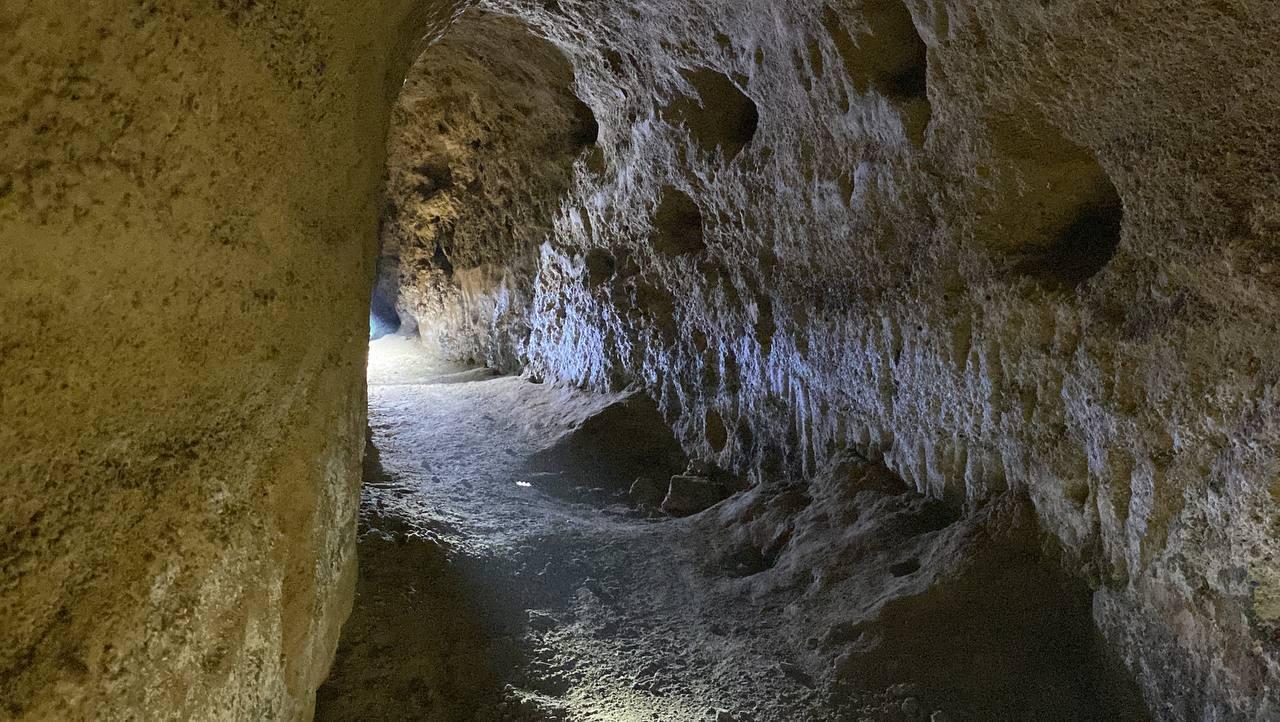Byzantine-Roman traces found in underground settlement
KARABÜK

Excavations carried out in a 5,500-year-old underground rock settlement in the ancient city of Hadrianopolis in the Eskipazar district of Karabük have unearthed galleries and halls having traces of Byzantine and Roman life.
Ersin Çelikbaş, associate professor at Karabük University's Department of Archaeology and the head of the excavation, said: "Lighting niches were made on both sides of the galleries. We can say that this place was illuminated with candles. We also found several animal reliefs in these galleries."
Çelikbaş found in 2022 that there were new historical structures in the ancient city of Hadrianapolis. An underground rock settlement dating back 5,500 years was found in the region and excavations started this year. The earth fills in the rock settlement were removed and the galleries were unearthed. Traces of Byzantine and Roman life were found in these galleries.
“We started excavations this year in this rock settlement, which we discovered in 2022. Works still continue and we reached a hall with a vaulted gallery. Here, we saw that the interior was densely filled with soil. The work started with removing this soil inside. Then new galleries leading to different spots emerged from the first hall. As we followed these galleries, we reached the second hall. In the second hall, we saw galleries going in different directions at three points. We also saw that one of these galleries reached a large hall. As we continued to remove the earthfill inside this hall, we identified new galleries leading to different points,” he said.
Stating that the underground rock settlement was used 5,500 years ago and that the settlement is a cultural asset like Cappadocia, Çelikbaş said that they were excited to find such an asset within the borders of Karabük.
“It showed us that the settlement was used during the Chalcolithic period, especially during the Roman period, and until the Byzantine period. Next year, we will continue digging the galleries here again. One of the things we will pay attention to in the galleries, which provide entrance to this underground rock settlement, is that lighting niches were built inside the galleries on both sides. We can say that this place was illuminated with candles. Another finding in these galleries was several animal reliefs. Therefore, we can say that people continued their lives here. Does this place have a religious connection? We have not yet fully determined this, but we are currently continuing our studies on this issue. Of course, we think that further excavations will provide us with more data on this subject,” Çelikbaş said.
















